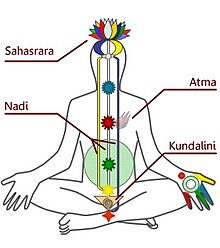Panchatcharam means made of five letters. It is the "Namasivaya (na-ma-si-va-ya)".
In that word, Na refers to the earth, Ma refers to the water, Si refers to the fire, Va refers to the air, Ya refers to the sky.
Swathishtana, Manipuraga, Anagadha, Visuthi, Agnjai all these are
dynamic centres which are nerve-plexuses in the body. All these
corresponds to the panchapoothas* says Thirumoolar.
He also says the Namasivaya as Na refers to Swathishtana, Ma refers to
Manipuraga, Si refers to Anagadha, Va refers to Visuthi, Ya refers to
Agnjai.
Thirugnana Samandhar says that the word "Namasivaya" is the sole meaning
of all the four vedas and is the supreme name for everything.
"காதலாகிக் கசிந்து கண்ணீர் மல்கி
kaathalaagik kasinthu kanneer malki
ஓதுவார்தமை நன்னெறிக்கு உய்ப்பது
oathuvaarthamai nannerikku uyppathu
வேதம் நான்கினும் மெய்ப்பொருளாவது
vaetham naankinum meypporulaavathu
நாதன் நாமம் நமசிவயவே
naathan naamam Namasivayavae"
- திருஞான சம்பந்தர் (Thirugnana Sambandhar)
"நானேயோ தவம் செய்தேன் சிவயநம எனப் பெற்றேன்
naanaeyoa thavam seythaen Sivayanama enap petraen"
says Manicka vaasagar about the greatness of panchatcharam.
"அஞ்சுக அஞ்செழுத்து உண்மை அறிந்தபின்
anjuga anjezhuththu unmai arinthapin
நெஞ்சுகத்து உள்ளே நிலையும் பராபரம்
nenjagaththu ullae nilaiyum paraaparam
வஞ்சகம் இல்லை மனைக்கும் அழிவில்லை
vanjagam illai manaikkum azivillai
தஞ்சம் இதுவென்று சாற்றுகின் றேனே
thanjam ithuvenru saatrukin raenae"
- திருமூலர் (Thirumoolar)
"சிவாயவொடு அவ்வே தெளிந்துஉளத்து ஓதச்
sivaayavodu avvae thelinthuulaththu oathach
சிவாயவொடு அவ்வே சிவனுரு வாகும்
sivaayavodu avvae sivanuru vaagum
சிவாயவொடு அவ்வும் தெளியவல் லார்கள்
sivaayavodu avvum theliyaval laarkal
சிவாயவொடு அவ்வே தெளிந்திருந் தாரே
sivaayavodu avvae thelinthirun thaarae"
- திருமூலர் (Thirumoolar)
says Thirumoolar about the greatness of panchatcharam.
"சிவாய மென்ற அக்கரம் சிவனிருக்கும் அக்கரம்
sivaaya menra akkaram sivanirukkum akkaram
உபாயம் என்று நம்புதற் குண்மை யான அக்கரம்
ubaayam enru nambuthar kunmai yaana akkaram
கபாடம் அற்ற வாசலைக் கடந்து போன வாயுவை
kabaadam atra vaasalaik kadanthu poana vaayuvai
உபாயம் இல்ல ழைக்கும் சிவய அஞ்செ ழுத்துமே
ubaayam illa zhaikkum sivaya anje zhuththumae"
- சிவவாக்கியார் (Sivavaakkiyar)
says Sivavaakkiyar about the greatness of panchatcharam.
In the next post we shall see about the sakthi mantra.
*Panjapootham - the five elements viz., earth, air, fire, water and sky.
